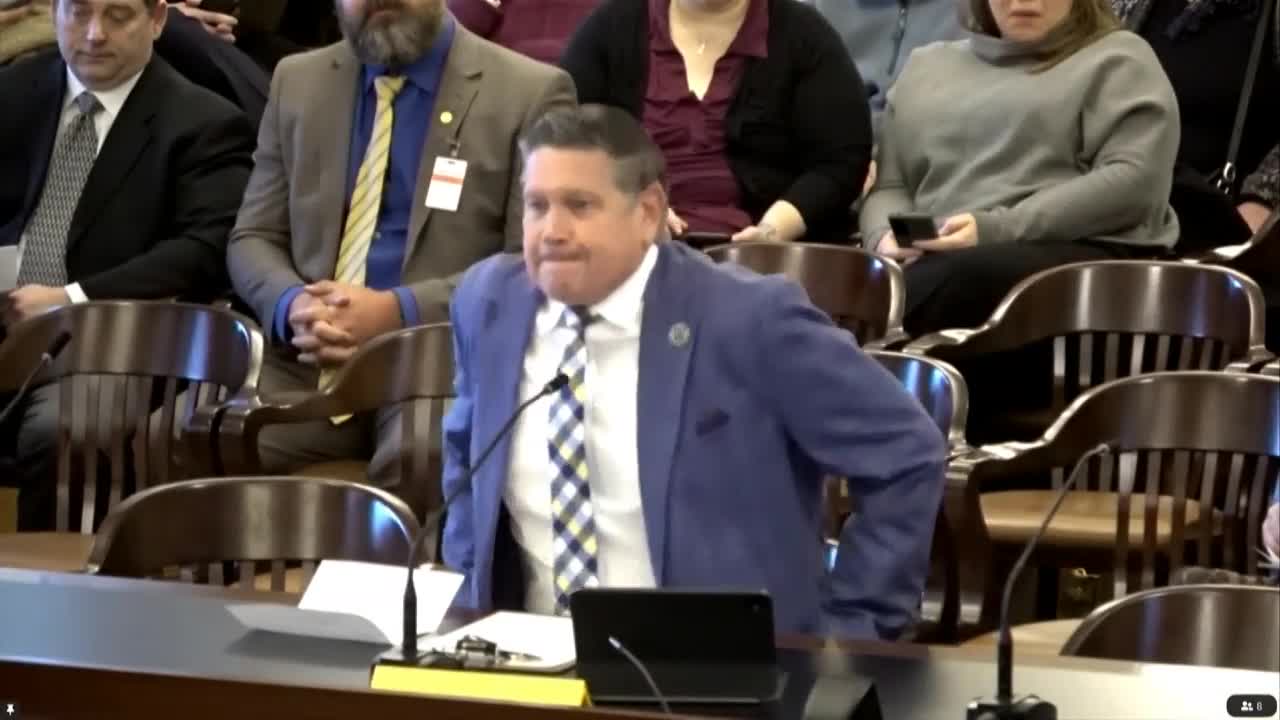Committee approves HB198 first substitute to ease billboard relocations tied to highway widening; passes favorably 10–1 after debate
February 14, 2025 | 2025 Utah Legislature, Utah Legislature, Utah Legislative Branch, Utah
This article was created by AI summarizing key points discussed. AI makes mistakes, so for full details and context, please refer to the video of the full meeting. Please report any errors so we can fix them. Report an error »

Representative Peterson presented House Bill 198 (first substitute), which increases the linear relocation distance for billboards displaced by highway projects — from 1 mile to 4 miles on interstates and from ½ mile to 1 mile on state highways — and clarifies where relocated signs may be placed.
The sponsor said the bill does not allow signs to move off the same highway or into residential neighborhoods and that the change is intended to avoid expensive buyouts of sign property: "Either we can help them find a location to put their sign or we're gonna have to buy them out," Peterson said. He also said the change was negotiated with the Utah League of Cities and Towns.
Industry representatives and the Utah League of Cities and Towns testified in support of a collaborative approach but identified remaining drafting concerns. Nate Seacrest of Reagan Outdoor Advertising told the committee, "These signs can only stay on the same highway, so linear is the very best description of that." Carson Eilers, policy director for the Utah League of Cities and Towns, told members the League is still working to clarify three drafting points, chiefly ensuring relocations stay within the same municipality unless both jurisdictions agree, refining language around obstruction-based relocation, and clarifying provisions specific to state highways.
Several witnesses representing Scenic Utah and other preservation interests urged caution and asked for time to review a substitute document released the night before the hearing. Gary Uresk, a Scenic Utah volunteer with decades of local-government experience, told the committee the statutory scheme is inconsistent in places and cited the federal Highway Beautification Act and a Utah federal agreement dating from the 1960s as relevant to spacing requirements; he urged the committee to ensure federal compliance. Ralph Becker and other witnesses also asked for more time to review the substitute.
UTAH Department of Transportation was reported to be in a neutral position; industry and a transit representative noted the change would reduce delays and costs when UDOT-led projects displace signage.
Committee action: the committee adopted the first substitute, then voted to pass HB198 out of committee with a favorable recommendation. A roll-call vote recorded 10 in favor and 1 opposed (Representative Romero voted no).
What changed: the substitute increases the allowable linear relocation distance along the original highway for displaced billboards; it retains local zoning and municipal approval requirements and keeps the standard that relocated signs must remain on the same highway. Committee members emphasized municipal permitting still applies and that relocated signage must conform to local commercial/industrial zoning.
The sponsor said the bill does not allow signs to move off the same highway or into residential neighborhoods and that the change is intended to avoid expensive buyouts of sign property: "Either we can help them find a location to put their sign or we're gonna have to buy them out," Peterson said. He also said the change was negotiated with the Utah League of Cities and Towns.
Industry representatives and the Utah League of Cities and Towns testified in support of a collaborative approach but identified remaining drafting concerns. Nate Seacrest of Reagan Outdoor Advertising told the committee, "These signs can only stay on the same highway, so linear is the very best description of that." Carson Eilers, policy director for the Utah League of Cities and Towns, told members the League is still working to clarify three drafting points, chiefly ensuring relocations stay within the same municipality unless both jurisdictions agree, refining language around obstruction-based relocation, and clarifying provisions specific to state highways.
Several witnesses representing Scenic Utah and other preservation interests urged caution and asked for time to review a substitute document released the night before the hearing. Gary Uresk, a Scenic Utah volunteer with decades of local-government experience, told the committee the statutory scheme is inconsistent in places and cited the federal Highway Beautification Act and a Utah federal agreement dating from the 1960s as relevant to spacing requirements; he urged the committee to ensure federal compliance. Ralph Becker and other witnesses also asked for more time to review the substitute.
UTAH Department of Transportation was reported to be in a neutral position; industry and a transit representative noted the change would reduce delays and costs when UDOT-led projects displace signage.
Committee action: the committee adopted the first substitute, then voted to pass HB198 out of committee with a favorable recommendation. A roll-call vote recorded 10 in favor and 1 opposed (Representative Romero voted no).
What changed: the substitute increases the allowable linear relocation distance along the original highway for displaced billboards; it retains local zoning and municipal approval requirements and keeps the standard that relocated signs must remain on the same highway. Committee members emphasized municipal permitting still applies and that relocated signage must conform to local commercial/industrial zoning.
View full meeting
This article is based on a recent meeting—watch the full video and explore the complete transcript for deeper insights into the discussion.
View full meeting

